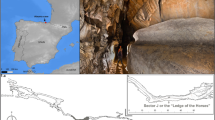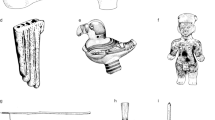Abstract
AMONG the immense mass of ancient Chinese records and manuscripts brought back from the buried cities and caves of ancient Khotan, in Central Asia, and now stored in the British Museum, is one called the Tun-Huang-Lu, a topographical description of part of Khotan itself. This little geography was written in the time of the Tang dynasty, in the seventh century, but probably contains matter from earlier authors.
This is a preview of subscription content, access via your institution
Access options
Subscribe to this journal
Receive 51 print issues and online access
$199.00 per year
only $3.90 per issue
Buy this article
- Purchase on Springer Link
- Instant access to full article PDF
Prices may be subject to local taxes which are calculated during checkout
Similar content being viewed by others
Author information
Authors and Affiliations
Rights and permissions
About this article
Cite this article
OFFORD, J. Musical Sand in China. Nature 95, 65–66 (1915). https://doi.org/10.1038/095065b0
Issue Date:
DOI: https://doi.org/10.1038/095065b0
Comments
By submitting a comment you agree to abide by our Terms and Community Guidelines. If you find something abusive or that does not comply with our terms or guidelines please flag it as inappropriate.



